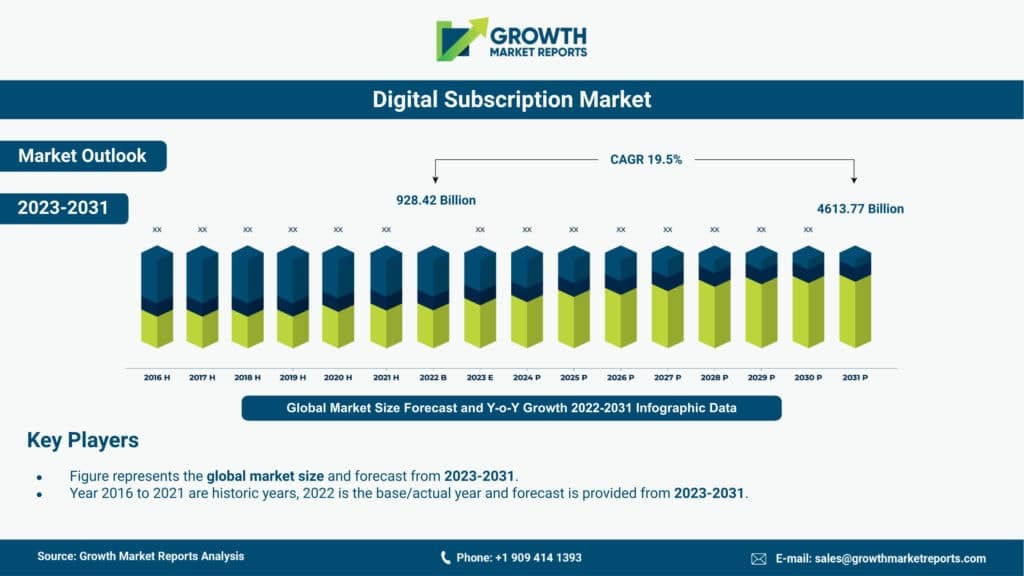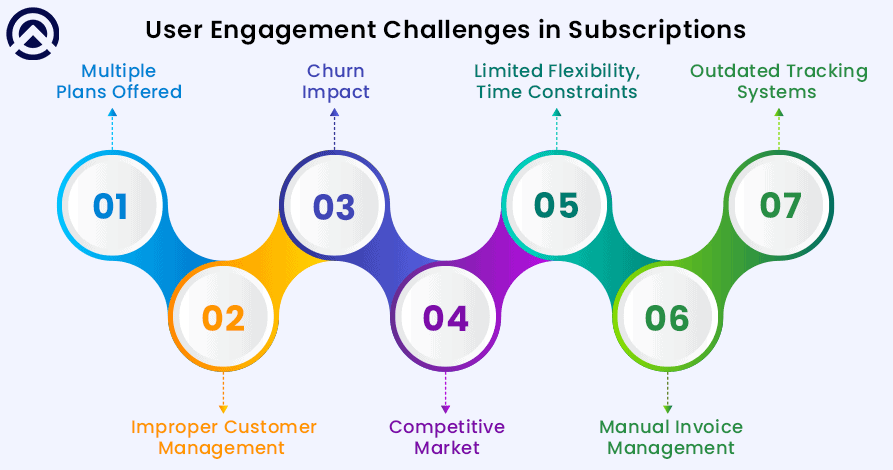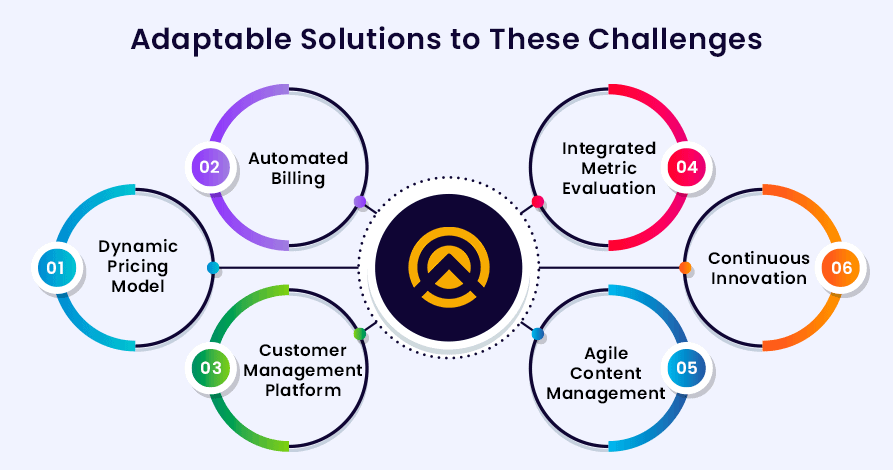Solving User Engagement Issues in Subscription Business Model
The current times are about digital advancements and the traditional concept of first come first serve has now been replaced by first subscribe and get served. Yes, we are directing you through the subscription-based services or business models. To establish a proper existence of a subscription business model within the market, a mobile app development company is required to take care of user engagement challenges or issues. Except for the challenging factor, user engagement is the only factor that can result in better outcomes for subscription models.
This can result in benefits like the base enhancement of loyal customers, boosted website traffic, enhanced user retention rate, excellent lead conversion, increment of overall profitability, positive brand awareness, and increased user experience. Your subscription business model can lack these advantages if you fail to address challenges related to user engagement. The research data by growth market research highlights the same aspects of the digital subscription market.

According to the above figure, the global digital subscription-based market was valued at USD 928.42 billion in 2022. Which is expected to grow with a compound annual growth rate of 19.5%. Raising this market size value to USD 4613.77 billion by the year 2031. This Online subscription business model which is also known as an electronic subscription is defined as a software service that can be offered by a mobile app development company or an individual. To get access to these subscription-based services, the user needs to pay a fixed amount for a specific timeframe.
Blog Highlights
This blog discusses the major challenges an organization can face while launching its Online subscription business model. These challenges are specifically addressed based on the user engagement factor. The major highlights of this are key user engagement issues in subscription business models. And adaptable solutions to these challenges. Give this a quick read to know how to handle these issues easily.
Key User Engagement Challenges in Subscription Business Models

1. Offering Multiple Subscription Plans
Online subscription business model thrive on flexibility, catering to the diverse demands of each customer. There is no one-size-fits-all approach to pricing models, emphasizing the need for tailored solutions. A subscription-based business model must provide a range of billing models, granting customers the freedom to choose according to their preferences. The chosen model significantly impacts revenue, making it imperative to consider various options: Freemium: Allows customers to begin for free, providing the option to pay when they decide to upgrade. Fixed Schedule and Pricing: Customers are charged a predetermined fixed amount at regular intervals for a specific product quantity. Tiered/Pay-per-Unit Pricing: Charges are based on the quantity purchased, following predefined tiers.
2. Improper Customer Management
Subscription-based enterprises grapple with the challenge of handling a substantial user base, posing difficulties in maintaining accurate customer records. Inaccuracies in the customer data management can detrimentally impact customer relationships, primarily due to errors arising from repetitive manual tasks. Furthermore, lapses in customer data result in insufficient information flow among staff, leaving them uninformed about trial periods or expired subscriptions. Mitigating strategies for customer retention and handling these challenges involves. Adopting a robust subscription management system that categorizes each customer’s position in the sales process. That provides pertinent data on previous interactions and ensures a seamless and error-free customer experience.
3. Churn Impact
Although subscription-based businesses may not grapple with the challenge of service novelty, ensuring a continuous addition of value to customers’ lives is paramount. Employing routine surveys facilitates understanding customer preferences and dislikes while implementing stackable loyalty reward programs proves effective in maintaining customer delight. These Strategies for user retention contribute to sustained customer engagement and act as a deterrent against patronizing competitors. Regularly surprising customers with reward points not only fosters a sense of genuine appreciation but also significantly diminishes dissatisfaction, subsequently reducing churn and fortifying the long-term relationship between the business and its clientele.
4. Competitive Market
In the fiercely competitive subscription arena, the plethora of alternatives available to users demands a proactive approach from businesses. Continuous innovation stands as a cornerstone in tackling this challenge, urging companies to push the boundaries of conventional services. Differentiation becomes a strategic imperative. Offering popular features, exclusive content, or unparalleled user experiences to set themselves apart. Actively seeking and integrating user feedback is a dynamic strategy for refining offerings and staying attuned to evolving preferences. Essential to this equation is a nuanced understanding of the distinctive needs of the target audience, enabling businesses not just to keep pace but to lead in this fiercely competitive landscape.
5. Limited Flexibility and Time Constraints
Even with a comprehensive pricing plan in place, customers may seek to upgrade, downgrade, cancel, or modify their plan shortly before billing. It is crucial to offer flexibility, allowing them to make changes without waiting for the next billing cycle. Real-time modifications become imperative in this context. Furthermore, the alterations customers make to their plans must be accurately documented and communicated to maintain a consistent, hassle-free, and smooth experience. Ensuring that these changes seamlessly integrate into their subscription journey enhances customer satisfaction and contributes to a positive overall user experience.
6. Manual Invoice Management
Providing customers with flexibility in a subscription business model introduces complexities for the organization. Invoice management becomes a formidable challenge with customization options, enhancements, and the convenience for customers to pause, resume, upgrade, or downgrade their plans. Manual invoice management is rendered impractical due to the vast amount of data that needs constant updating. This method not only consumes excessive time and resources but also poses a high security risk of errors. Automating the billing system is imperative to streamline the process, ensuring timely generation and delivery of accurate invoices. This transition to automation not only mitigates challenges associated with manual invoice management but also enhances operational efficiency and reduces the likelihood of errors and delays in billing processes.
7. Outdated Tracking Systems
Instead of evaluating success through isolated metrics like Monthly Recurring Revenue (MRR), churn, and recurring profit margins, amalgamate these key points. This unified approach provides subscription-based businesses with comprehensive insights, offering answers to crucial questions about the overall financial well-being of the company. By integrating these metrics, businesses gain a holistic perspective on their performance, enabling more informed decision-making. A real-time dashboard becomes instrumental in visualizing progress, providing an accessible and dynamic tool for monitoring and assessing the interconnected dynamics of MRR, churn, and recurring profit margins. This integrated strategy enhances strategic planning and fosters a more nuanced understanding of the business’s financial landscape.
Related Blog: How the Subscription Model is ruling the Mobile Apps Industry?
Adaptable Solutions to These Challenges

1. Dynamic Pricing Model
Implementing dynamic pricing structures is pivotal in staying responsive to the ever-changing landscape of customer preferences and usage patterns. These structures not only facilitate scalability but also offer a level of customization that resonates with individual user needs. By providing customers the flexibility to choose plans that align precisely with their evolving requirements, businesses foster a deeper connection and enhance user satisfaction. Crucially, this adaptability avoids disruptions in the billing cycle, ensuring a seamless experience for customers while empowering businesses to stay agile in the face of market demand dynamics and evolving consumer expectations.
2. Automated Billing
Wholeheartedly adopting automated billing systems is a strategic move to streamline the invoicing process efficiently. By entrusting billing tasks to automation, businesses significantly mitigate the risks of errors commonly associated with manual management. Automated systems ensure precision in generating and promptly delivering invoices, thereby bolstering overall operational efficiency. This not only saves valuable time and resources but also minimizes the likelihood of billing discrepancies. The seamless integration of automated billing not only enhances the accuracy of financial transactions but also contributes to a smoother, error-free invoicing workflow, enabling businesses to focus on core activities and deliver an elevated experience to their customers.
3. Customer Management Platforms
Tailoring marketing campaigns to individual customer preferences emerges as a potent strategy for bolstering user retention in the competitive e-commerce landscape. Utilize the wealth of customer data at your disposal to deploy targeted and personalized messages, exclusive offers, and thoughtful recommendations. Employ automation tools to meticulously segment your audience based on their behavior, demographics, and purchase history. This precision in communication not only enhances the user experience but also fosters a robust connection with customers, significantly increasing the likelihood of sustained engagement with the brand with the use of customer engagement and retention strategies. The art of personalized marketing solidifies your brand’s position, forming a crucial element in the strategic arsenal for achieving long-term user retention.
4. Integrated Metric Evaluation
Elevate your performance evaluation strategy by transcending isolated metric tracking. Integrate pivotal key performance indicators (KPIs) like Monthly Recurring Revenue (MRR), churn rates, and profit margins into a unified framework. This holistic approach offers a comprehensive view of the business’s financial health, empowering decision-makers with a nuanced understanding of overall performance. By combining these critical metrics, businesses gain valuable insights into the interplay of revenue generation, customer retention, and profitability. This integrated perspective not only facilitates more informed decision-making but also establishes a foundation for strategic planning, enabling businesses to navigate challenges and capitalize on opportunities in the ever-evolving landscape of subscription business model.
5. Agile Content Management
In the realm of content-centric subscription models, proactively refreshing and diversifying the content library is a strategic imperative to combat monotony. Staying attuned to evolving user preferences and industry trends is paramount in ensuring that the service consistently delivers compelling and relevant content. Regular updates not only engage existing subscribers but also attract new audiences seeking fresh and diverse offerings. By understanding the dynamic landscape of user preferences and industry innovations, businesses can stay ahead in the competitive content space. This commitment to content evolution not only fosters user satisfaction but also positions the subscription service as a dynamic and indispensable source of high-quality, up-to-date content.
6. Continuous Innovation
Maintain a competitive edge by nurturing a culture of continuous innovation within your organization. Actively seek customer feedback to glean valuable insights into their evolving needs and preferences. Investing in emerging technologies positions your subscription business model at the forefront of industry advancements, allowing you to deliver cutting-edge solutions. Adapt offerings in response to ever-changing market dynamics, ensuring relevance and resonance with your target wider audience. This commitment to innovation not only enhances customer satisfaction but also establishes a resilient position in the fiercely competitive subscription landscape. By staying agile, responsive, and forward-thinking, your business can not only keep pace with industry shifts but also lead the way in shaping the future of subscription-based models.
Read more: Transform Businesses: The Strategies Behind Successful App Development
Conclusive Outline
In the competitive realm of subscription business model, addressing user engagement is paramount. Strategic solutions play a pivotal role in fostering progress and prosperity, leveraging user feedback for tailored insights. Forward-thinking organizations employ user-centric approaches to enhance platforms through empirical analysis. Despite challenges, many have emerged as pioneers in revolutionizing user engagement. In today’s landscape, the adoption of intelligent, data-driven strategies for customer retention is more accessible than ever, empowering companies to adapt swiftly to evolving user preferences and stand out in the dynamic subscription-based services market.
Amplework, a frontrunner in the mobile app development arena, boasting over 5+ years of extensive expertise, specializes in addressing user engagement challenges prevalent in subscription-based services. Recognizing the critical importance of resolving these issues, our dedicated team consistently exceeds client expectations, establishing a reputation for reliability and trustworthiness. With noteworthy milestones, including supporting various entities in enhancing user engagement, we adhere to the highest standards of innovation. Explore our website to unveil our cutting-edge solutions for mitigating user engagement challenges in subscription-based services. Choose Amplework as your partner to embark on a transformative journey in solving user engagement issues and elevating your subscription-based service.
Related Blog:- Navigating Security Risks in Mobile Banking Apps



 sales@amplework.com
sales@amplework.com
 (+91) 9636-962-228
(+91) 9636-962-228





